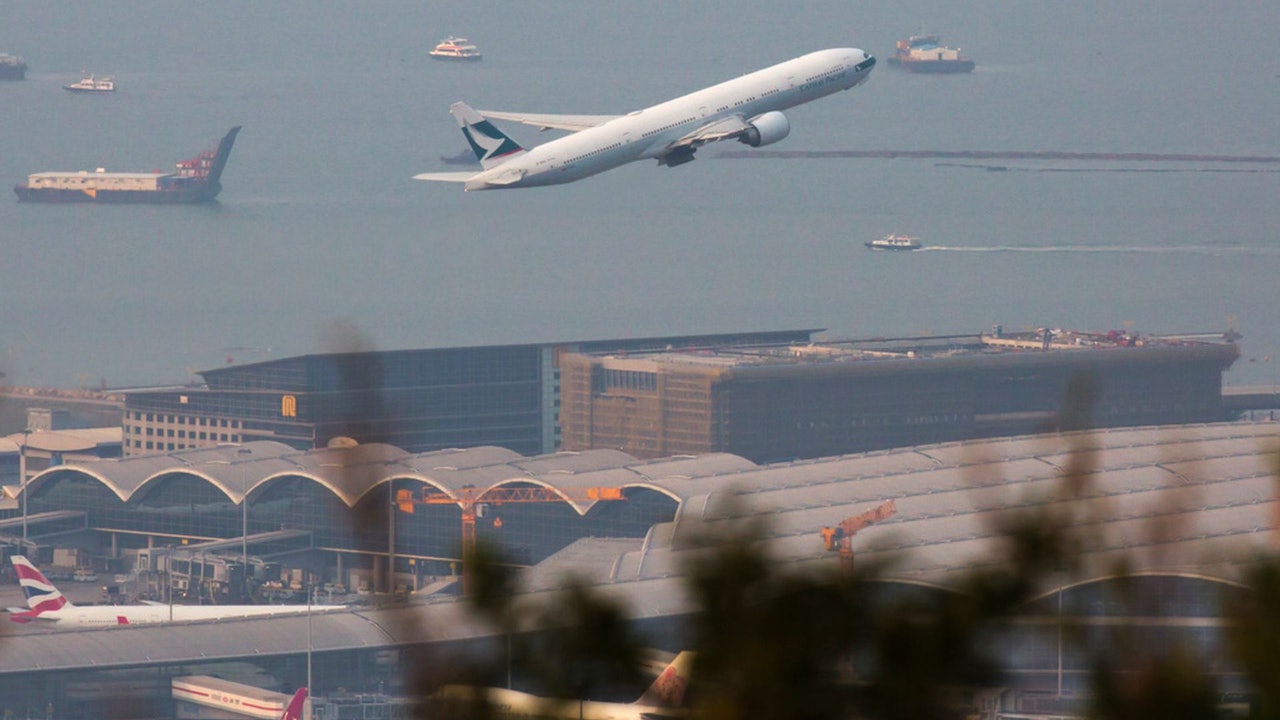Three years ago, a Cathay Pacific A330 passenger plane carrying 272 passengers and 13 crew members had an engine failure and had to turn back after takeoff.
The incident flight was originally scheduled to fly from Hong Kong to Manila, Philippines on February 1, 2018. However, after the Hong Kong International plane took off, the No. 1 engine made a wheezing sound, returned to the Hong Kong airport and landed safely. No one was injured.
More than three years after the incident, the Civil Aviation Accident Investigation Agency released an investigation report today (17th), stating that a high-pressure turbine blade in the airliner's engine was broken, which was believed to be corroded by chemicals emitted during fuel combustion and caused by high-cycle fatigue.
Engine manufacturer Rolls-Royce has earlier revised the life recommendations for aircraft engine blades and improved anti-corrosion coatings.
After the Cathay Pacific flight involved started at the Hong Kong International Airport, it was discovered that the engine was malfunctioning and returned to Hong Kong.
(Picture of Investigation Report)
The Cathay Pacific flight involved was operated by an A330-343 passenger plane. At about 9 o'clock in the evening of the incident, shortly after the passenger plane took off, the central electronic aircraft monitor issued a stall warning message for engine No. 1 with audible wheezing and mid-air High vibration information of high pressure rotation system and high pressure rotation system, and low oil pressure information.
At that time, the crew immediately shut down the engine and returned to the Hong Kong Airport, successfully landing safely, no one was injured.
During subsequent investigations, it was discovered that metal fragments were found in the engine tube of the passenger plane No. 1. Endoscopy confirmed that a high-pressure turbine blade was broken and other nearby blades were also damaged.
The passenger plane involved used the Rolls-Royce Turbulent 772B-60 engine and was finally inspected on September 26, 2017. There was no problem with the first engine before the accident.
As of mid-2018, there were 18 similar reports worldwide
The investigation report of the Civil Aviation Accident Investigation Agency pointed out that the high-pressure turbine blades operate under the most severe temperature and pressure. During the combustion process, the sulfur and sodium chloride in the fuel will turn into corrosive hydrochloric acid at high temperatures. More susceptible to erosion of turbine blades.
In this accident, the sulphur stuck in the foot of the leaf melted under the heat and corroded the compound that protects the leaf.
As of June 2018, there were 18 similar cases worldwide.
Rolls-Royce notified on October 30, 2018 that two sets of specific styles of engines need to be removed due to replacement of high-pressure turbine blades, and suggested that the first engine's high-pressure turbine blades should be removed from May 1, 2019. , Cannot use more than 3,500 flight cycles.
From January 4, 2019, the European Aviation Safety Agency has requested the global aviation industry to follow the above recommendations.
Rolls-Royce has improved the protective layer of aircraft engine blades
In order to enhance the reliability of high-pressure turbine blades, Rolls-Royce has improved the protective layer of the blades from platinum to an aluminized layer to strengthen the defense against oxidation and sulfide corrosion. It is expected to be launched this year.
Before the accident, the relevant blades could be replaced in a cumulative total of 6,000 flight cycles, and now it has been changed to 5,800 flight cycles.
According to Rolls-Royce's research, after 5,500 to 6,000 flight cycles of at least 380 engines, there were no blade problems. During this time of use, there was only one accident.
The report pointed out that since the European Aviation Safety Agency, Rolls-Royce and the Civil Aviation Department have taken safety measures, the report did not make further safety recommendations.
Cathay Pacific cargo plane returned to Hong Kong speeding landing gear damage paralyzed the airport for nearly two hours 36-year-old Cathay Pacific crew member returned to Hong Kong suspected of Omicron residence Xiangxing Building closed area inspection Cathay Pacific: business is in a state of breakeven, but does not rule out seeking additional financing opportunities Cathay Pacific Christmas and New Year In peak season, return flights to Hong Kong will be reduced by one-third of the closed-loop flight mode

